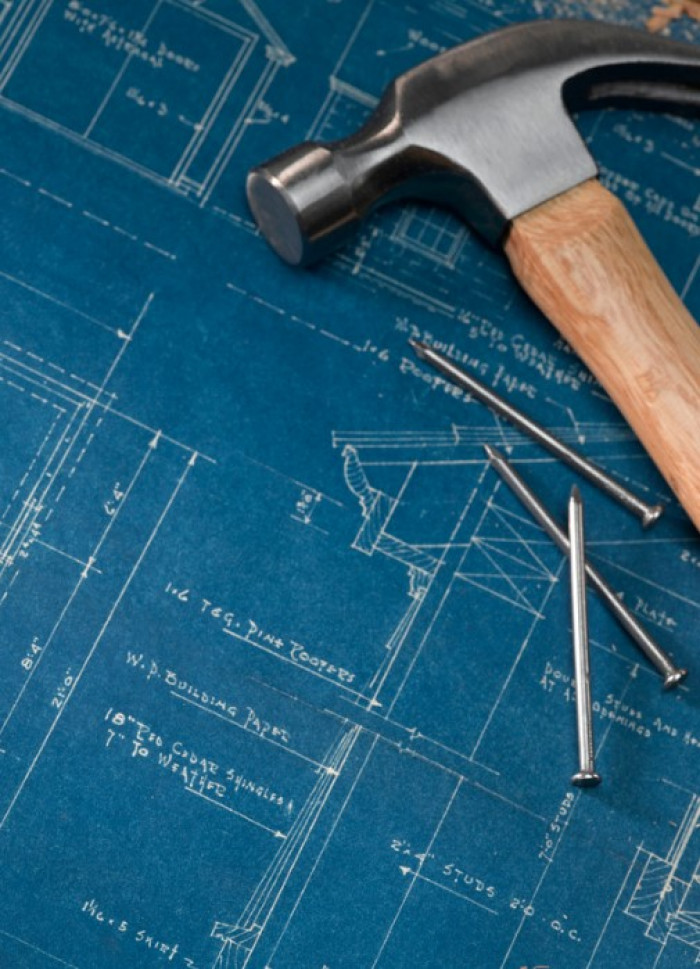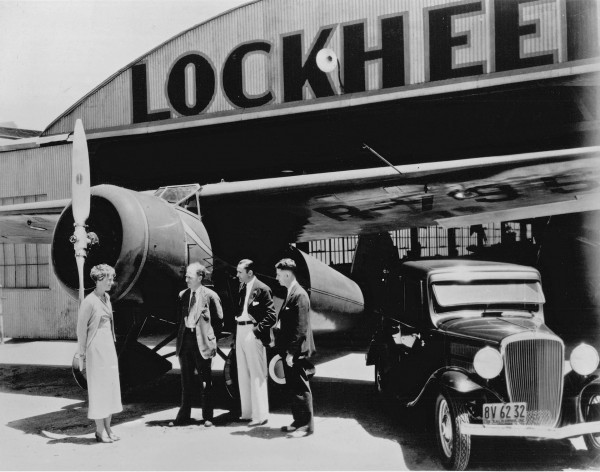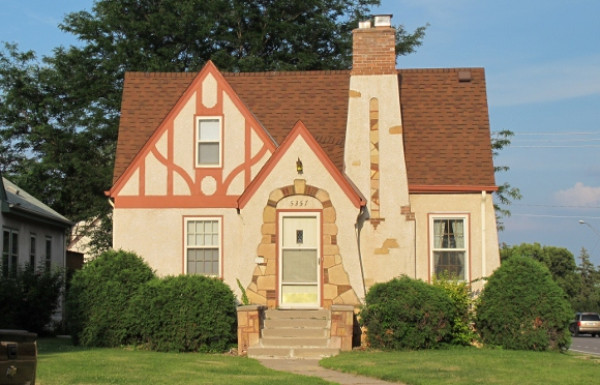Unlocking the secrets of your home's design and construction: A comprehensive guide to locating and utilizing your home's blueprints
Want to learn more about your home's design and construction? Here's everything you need to know about your home's blueprints to find out.
June 14, 2023
Unlocking the Secrets of Your Home's Construction: How to Find Your Home's Blueprints
Have you ever wondered about the hidden intricacies of your home's architecture? The blueprints of your household are the key to unlocking its secrets, providing a detailed roadmap of its design and construction. Whether you're planning renovations, curious about the structural layout, or intrigued by the history of your home, finding its blueprints can offer invaluable insights.
In this comprehensive guide, we will delve into the various methods and resources available to help you embark on a quest to locate your home's blueprints. From reaching out to local government offices and original builders/architects to exploring online platforms and considering professional assistance, we'll equip you with the tools and knowledge necessary to uncover the blueprint treasures of your beloved home. So, let's begin our journey of discovery, as we unravel the story behind the walls and unveil the architectural wonders that make your house truly unique.
Importance of blueprints in understanding your homes structure and home design
Blueprints are more than just a set of technical drawings or diagrams. They are invaluable documents that provide a wealth of information about the design, layout, and construction of your home. Understanding the importance of blueprints and floor plan can significantly enhance your knowledge of your home's structure. Here are a few key reasons why blueprints play a crucial role in unraveling the mysteries behind your house.
1) Comprehensive Visual Representation: Blueprints offer a comprehensive visual representation of your home's architectural design. They provide detailed plans, elevations, and cross-sections, allowing you to see the layout and dimensions of each room, the placement of walls, windows, doors, and other vital elements. By studying the blueprints, you can gain a deeper understanding of the overall structure and flow of your home.
2) Structural Integrity and Safety: Blueprints provide critical information about the structural elements of your home. They include details about load-bearing walls, foundation specifications, roof design, and support systems. This knowledge is essential for identifying potential structural issues, ensuring proper maintenance, and making informed decisions regarding renovations or modifications. By referencing the blueprints, you can ensure the integrity and safety of your home.
3) Utilities and Systems: Understanding the location of essential utilities and systems within your home is made easier with blueprints. Plumbing, electrical wiring, heating, ventilation, and air conditioning (HVAC) systems are all represented in the blueprints. This information is invaluable for maintenance purposes, troubleshooting problems, or planning future upgrades or installations. With the blueprints as a guide, you can navigate the intricate network of your home's utilities.
4) Renovation and Remodeling Projects: Blueprints are an indispensable tool when undertaking renovation or remodeling projects. Whether you want to add an extension, reconfigure the layout, or make structural changes, blueprints serve as a reference point for contractors, architects, and designers. They provide accurate measurements, spatial relationships, and construction details, ensuring your vision seamlessly aligns with the existing structure.
5) Historical Documentation: Blueprints offer a glimpse into the history of your home. They capture the original design and construction details, reflecting the architectural style and techniques employed during the time of its creation. Preserving and understanding these blueprints not only adds to the historical value of your home but also allows you to appreciate its unique heritage and craftsmanship.
Blueprints are essential documents that provide a comprehensive understanding of your home's structure. From visualizing the layout and dimensions to ensuring structural integrity and facilitating renovation projects, blueprints empower homeowners with knowledge about their dwellings. By exploring and studying these invaluable documents, you can embark on a fascinating journey of unraveling the secrets and appreciating the architectural wonders that make your home truly special.
Overview of the process of finding house blueprints
The quest to find your home's blueprints may seem like a daunting task, but with the right approach, it can be an exciting and rewarding endeavor. Here is an overview of the process to guide you in your search for those valuable documents.
1) Start with Local Government Offices: Begin by contacting the building or planning department of your city or county. These government offices often keep records of building permits and blueprints. Provide them with your home's address and inquire about the availability of blueprints. They can guide you through the process and provide information on how to access the records they maintain.
2) Consult the Original Builder or Architect: Reach out to the original builder or architect of your home. They might still have copies of the blueprints in their records. The building permit will contain the name of the contractor or architect and you can search for their contact information for the construction company or architect and inquire about the availability of the blueprints. If the original entity is no longer available, consider contacting successors or related firms that might have taken over their records.
3) Seek Assistance from Real Estate Agents: If you purchased your home with the assistance of a real estate agent, they might have access to blueprints or information on how to obtain them. Contact your agent and explain your interest in finding the blueprints. They can help you navigate the process or provide leads to relevant resources.
4) Connect with Previous Owners: Reach out to previous owners of your home and inquire about the blueprints. They may have copies or knowledge of their whereabouts. Send letters, emails, or make phone calls to establish contact and politely request any information they can provide. Their insights could prove invaluable in your search.
5) Explore Online Resources: Believe it or not, a lot of home plans were purchased out of catalogs. Even the most unique Victorian homes could be from a collective of standard architectural plans. A great place to start is your local library system.
6) Consider Professional Help: If your efforts so far have been unsuccessful, consider hiring professionals who specialize in blueprint retrieval. Architects, draftsmen, or specialized blueprint retrieval services have experience in locating and obtaining blueprints. While this option may involve a cost, their expertise can save you time and effort in your search.
Throughout the process, remember to be diligent, patient, and open to exploring various avenues. Blueprints may not be readily available for all homes, especially older properties or those constructed before the digital age. In such cases, alternative sources such as architectural drawings, permits, or other construction documentation can still provide valuable insights into your home's structure.
Alternative sources for home construction information
In addition to blueprints, there are alternative sources that can provide valuable information about your home's construction. While blueprints offer detailed and comprehensive insights, these alternative sources can supplement your understanding of the building process. Here are a few options to consider:
1) Building Permits: Building permits are official documents obtained during the construction process. They provide information about the approved plans, inspections conducted, and any modifications made during construction. Reviewing building permits can offer valuable insights into the construction history of your home.
2) Architectural Drawings: Architectural drawings, including floor plans, elevations, and sections, may be available even if the original blueprints are not accessible. These drawings provide a visual representation of the design and layout of your home. They can be obtained from the architect who worked on the project or through local government offices.
3) Inspection Reports: If your home has undergone inspections during construction or renovation, inspection reports can provide insights into the structural components and compliance with building codes. These reports often include details about foundations, framing, electrical systems, plumbing, and more.
4) Contractor or Builder Interviews: Reaching out to the contractors or builders involved in the construction of your home can yield valuable information. They might have knowledge of the building techniques, materials used, and specific details that may not be captured in blueprints or other documents.
5) Homeowner's Manual or Documentation: Some homes come with a homeowner's manual or documentation provided by the builder. These documents often include information about the construction process, maintenance guidelines, and warranties. They can provide insights into the construction materials, systems, and maintenance recommendations.
6) Remodeling or Renovation Documentation: If your home has undergone previous remodeling or renovation projects, documentation from those projects can offer insights into the construction details. This includes permits, architectural drawings, contractor agreements, and invoices, which may contain information about the modified areas of your home.
While these alternative sources may not provide the same level of detail as blueprints, they can still offer valuable information about your home's construction. Consider exploring these sources alongside your blueprint search to create a more comprehensive understanding of the building history, materials used, and any modifications that have taken place over time.
Contacting Local Government Offices to find your homes blueprints
Building or planning departments play a crucial role in the construction and development of communities. These government offices are responsible for enforcing building codes, regulations, and zoning ordinances to ensure safe and compliant structures. When it comes to finding home blueprints, building or planning departments are valuable resources. Here's an explanation of their role and how they can assist you:
1) Blueprint Archiving: Building or planning departments often maintain archives of construction plans and blueprints submitted for building permits. These archives serve as a repository of valuable information about the structures within their jurisdiction. The departments store these documents to facilitate future inspections, code compliance checks, and reference purposes.
2) Record Keeping: Building or planning departments keep records of building permits, inspections, and other construction-related documentation. This includes the history of construction projects, modifications, and renovations undertaken within their jurisdiction. These records can provide insights into the construction details and history of your home.
3) Permit Issuance: Building or planning departments are responsible for issuing permits for construction, renovation, or modification projects. They review proposed plans and ensure they comply with building codes and zoning regulations. Obtaining the necessary permits involves submitting architectural drawings, specifications, and other documentation related to the construction process.
4) Code Enforcement: Building or planning departments enforce building codes and regulations to ensure the safety, structural integrity, and compliance of structures. They conduct inspections at various stages of construction to verify adherence to codes related to foundations, framing, electrical, plumbing, and more. These inspections help maintain the quality and safety standards of buildings.
5) Assistance and Information: Building or planning departments are valuable sources of information regarding construction-related matters. They can provide guidance on the process of finding blueprints, explain the requirements for accessing records, and provide information about any available resources or services they offer. They may also direct you to other relevant departments or agencies for further assistance.
When searching for your home's blueprints, reaching out to the building or planning department of your city or county is often the first step. They can guide you through the process, provide information about the availability of blueprints, and offer insights into the construction history of your home.
Steps to contact the relevant local government office
Step 1: Identify the Appropriate Local Government Office
Determine the specific local government office responsible for building permits and records in your area. This is typically the building or planning department of your city or county. You can find their contact information through a quick online search or by referring to local government directories.
Step 2: Gather the Necessary Information
Before reaching out to the local government office, gather the necessary information related to your property. This includes the complete address, including any unit or lot numbers, street name, city or county, and zip code. Having accurate and specific details about your property will facilitate the search for blueprints.
Step 3: Contact the Office
Once you have the contact information and your property details, contact the local government office. You can do this through various means, such as having the city or county clerks phone number to call, email, or visiting the office in person. Choose the method that is most convenient for you and allows for effective communication.
Step 4: Inquire about Blueprint Availability
When contacting the local government office, explain your purpose clearly and politely. Let them know that you are interested in obtaining the blueprints for your house. Provide them with accurate address details and any additional information they may require. Inquire about the availability of blueprints and the process for accessing them.
Step 5: Follow the Office's Instructions
Listen carefully to the instructions provided by the office staff. They may require you to complete certain forms, pay fees, or provide identification. Follow their guidance and ensure that you fulfill all necessary requirements. Take note of any specific procedures or deadlines they provide.
Step 6: Submit a Formal Request, if Required
If the local government office requires a formal request for accessing blueprints, complete the necessary forms accurately and provide any supporting documentation as requested. Pay any required fees promptly and keep records of your submission for future reference.
Step 7: Follow Up and Maintain Communication
After submitting your request, it is important to maintain regular communication with the local government office. Follow up within a reasonable timeframe to check the status of your request. Be patient, as the process may take time depending on the office's workload and record retrieval procedures.
Step 8: Seek Assistance if Needed
If you encounter any difficulties or have unanswered questions during the process, do not hesitate to seek assistance. Contact the local government office's customer service or speak to a supervisor for further guidance. They are there to help and can provide clarification or additional information if necessary.
By following these steps, you will establish contact with the relevant local government office, inquire about blueprint availability, and initiate the process of accessing blueprints for your houses. Remember to be patient, polite, and organized throughout the communication and follow-up process. With perseverance, you'll be one step closer to obtaining the valuable blueprints that hold the key to understanding your home's construction.
Consulting the Original Builder or Architect for your blueprints
When searching for your home's blueprints, one of the most fruitful avenues to explore is reaching out to the original builder or architect involved in its construction. These professionals often retain records and copies of the blueprints, making them a valuable resource in your quest. Here's a guide on how to consult the original builder or architect for your blueprints:
1) Gather Information: Begin by collecting any available information about the original builder or architect. This may include their name, company, contact details, and any other relevant information you can find. If you purchased the house recently, check the closing documents, real estate disclosures, or any previous correspondence that might mention the builder or architect.
2) Conduct Online Research: Utilize online search engines, business directories, and social media platforms to locate the builder or architect associated with your home. Explore their websites, portfolios, or social media profiles, as they may provide contact information or clues about how to reach them.
3) Contact the Builder or Architect: Once you have their contact details, reach out to the builder or architect through phone, email, or any other preferred method of communication. Introduce yourself as the current homeowner and express your interest in obtaining the blueprints for your house. Be courteous and provide relevant details such as the address and approximate date of construction.
4) Explain Your Purpose: Clearly explain why you are seeking the blueprints and how they would assist you. Highlight your desire to better understand the structure and potentially make renovations or improvements. Builders and architects appreciate homeowners who demonstrate a genuine interest in preserving and enhancing the property they designed or constructed.
5) Inquire about Blueprint Availability: Ask the builder or architect if they have copies of the blueprints or if they can guide you to the right sources. Some builders retain records for a certain period, while others may have digitized their archives. They might also refer you to an appropriate contact within their company or provide alternative suggestions for obtaining the blueprints.
6) Provide Supporting Information: If the builder or architect confirms the availability of blueprints, provide them with any documentation they may require, such as proof of ownership or identification. This helps establish your legitimacy and facilitates the process of accessing the blueprints.
7) Maintain a Professional and Positive Approach: Builders and architects are busy professionals, so be understanding if they don't respond immediately or cannot locate the blueprints. Follow up politely and maintain a professional and positive attitude throughout the interaction. Building rapport and maintaining good communication can increase the likelihood of a successful outcome.
8) Explore Successors or Related Firms: If the original builder or architect is no longer available or unable to provide the blueprints, consider contacting successors or related firms that may have taken over their records. These entities might have inherited the blueprints or possess knowledge about their whereabouts.
Consulting the original builder or architect can be a valuable step in obtaining your home's blueprints. Their expertise, knowledge of the construction process, and access to records can significantly increase your chances of acquiring the desired documents. By approaching them with respect and a genuine interest in your home's history, you may uncover the blueprints that hold the secrets to its design and construction.
Check with Real Estate Agents for your home’s blueprints or house plans
When searching for your home's blueprints, one often overlooked resource is real estate agents. These professionals have extensive knowledge about the local housing market and may have access to valuable information or contacts that can help you in your quest. Here's a guide on how to check with real estate agents about your blueprints:
1) Identify Local Real Estate Agents: Start by identifying reputable real estate agents in your area. You can do this through online searches, recommendations from friends or neighbors, or by contacting local real estate agencies. Focus on agents who specialize in your specific neighborhood or have experience with properties similar to yours.
2) Contact Real Estate Agents: Once you have identified potential agents, reach out to them via phone, email, or through their agency's contact form. Introduce yourself as the homeowner and explain your interest in obtaining the blueprints for your house. Be courteous and provide relevant details such as the property address and approximate date of construction.
3) Explain Your Purpose: Clearly explain why you are seeking the blueprints and how they would benefit you. Emphasize your desire to better understand the property's structure, conduct renovations, or make improvements. Real estate agents may have come across similar requests in the past and could have insights or connections that can assist you.
4) Inquire about Available Resources: Ask the real estate agents if they have any resources or contacts that could help you access the blueprints. They might be aware of local builders, architects, or previous homeowners who could provide valuable information. Additionally, they may have access to databases or records that can aid your search.
5) Seek Recommendations: Request recommendations for professionals who specialize in blueprints, architectural records, or historical documentation. Real estate agents often work closely with such professionals, such as surveyors, appraisers, or property historians, who may possess the knowledge or resources to assist you further.
6) Leverage their Network: Real estate agents have an extensive network of contacts in the industry. They may be able to connect you with other homeowners who have successfully obtained their home's blueprints. Sharing experiences and insights with fellow homeowners can provide valuable guidance and shortcuts in your own search.
7) Follow-Up and Maintain Communication: If the real estate agent offers to assist you or provides leads, follow up promptly and maintain open communication. Keep them informed about any progress or setbacks you encounter. Real estate agents are invested in their client's satisfaction and may be willing to support your efforts throughout the process.
8) Express Gratitude: Real estate agents often go above and beyond to assist homeowners. Regardless of the outcome, express your gratitude for their time, insights, and any assistance they have provided. Building positive relationships with professionals in the real estate industry can prove beneficial in the long run.
Real estate agents can be an invaluable resource when searching for your home's blueprints. Their knowledge, connections, and access to records or contacts within the industry can significantly enhance your chances of locating the desired documents. By reaching out to them with a clear purpose and maintaining open communication, you may uncover valuable leads or receive guidance that will bring you closer to unraveling the mysteries of your home's construction.
Reaching Out to Previous Owners
When searching for your home's blueprints, one potential avenue to explore is reaching out to previous owners. They may have valuable information or even possess copies of the blueprints themselves. Here's a guide on how to reach out to previous owners to find your home's blueprints:
1) Gather Information: Begin by collecting any available information about the previous owners of your home. This may include their names, contact details, and any other relevant information you can find. Check your closing documents, title deeds, or any historical records related to the property that might mention previous owners.
2) Online Search and Social Media: Utilize online search engines and social media platforms to search for the previous owners. Try searching their names along with any other identifying information you have, such as the property address or their occupation. Social media platforms, especially those focused on local communities, can provide avenues to connect with them directly or find mutual acquaintances who can help you establish contact.
3) Write a Letter or Email: Once you have identified the previous owners' contact information, consider writing a polite letter or email to introduce yourself as the current homeowner and express your interest in obtaining the blueprints for the house. Explain your intention to understand the property's construction and ask if they have any information or copies of the blueprints that they could share.
4) Local Community or Neighborhood Associations: Reach out to local community or neighborhood associations in the area where your home is located. They may have records or directories that can help you locate previous owners or connect with individuals who have historical knowledge of the property.
5) Attend Local Events or Gatherings: Keep an eye out for local events or gatherings where you might have the opportunity to meet previous owners face-to-face. Neighborhood association meetings, community events, or even social gatherings in the area could provide an opportunity to connect with individuals who have historical knowledge of your home.
6) Be Respectful and Patient: When reaching out to previous owners, be respectful of their privacy and understand that they may not be obligated to assist you. Some may not have retained any records or may have limited information about the blueprints. Be patient and understanding, and don't be discouraged if you encounter difficulties or receive no response. Persistence and a respectful approach can go a long way.
7) Maintain a Record of Communications: Keep a record of your communication attempts, including the dates, methods used, and any responses received. This will help you keep track of your progress and serve as a reference in case you need to follow up or refer to the information later.
Reaching out to previous owners can be a valuable step in your search for your home's blueprints. Their firsthand knowledge or possession of the blueprints themselves can provide valuable insights into the property's construction. By approaching them respectfully and patiently, you may uncover the information you seek, adding another piece to the puzzle of your home's history and design.
Hiring professional help to aid in finding blueprints, floor plan, and house plans
Searching for your home's blueprints can sometimes be a challenging and time-consuming task, especially if you have exhausted other avenues. In such cases, hiring professional help can be a worthwhile investment. These experts possess specialized knowledge and resources to assist you in your quest for blueprints. Here's a guide on how to hire professional help for finding blueprints:
1) Research and Identify Professionals: Begin by researching professionals who specialize in architectural records, historical documentation, or property research. Look for individuals or companies with a proven track record in locating blueprints or assisting homeowners in similar situations. Online searches, professional directories, or recommendations from friends or neighbors can help you identify potential candidates.
2) Assess Expertise and Services: Evaluate the expertise and services offered by the professionals you have identified. Consider their experience in the field, their knowledge of local building practices, and their access to databases or records. Look for professionals who have dealt with properties similar to yours or who have a comprehensive understanding of historical property records.
3) Contact and Discuss Your Needs: Reach out to the professionals and explain your specific requirements. Provide details about your property, including its address, approximate date of construction, and any other relevant information you have gathered. Discuss your goal of obtaining the blueprints and ask how their services can assist you in achieving that goal.
4) Inquire about Methodology and Success Rate: Ask the professionals about their methodology for locating blueprints and their success rate in similar cases. Inquire about the types of resources they utilize, such as archival records, historical databases, or contacts within the industry. Understanding their approach will give you confidence in their ability to deliver the desired results.
5) Request Cost Estimates and Timeline: Obtain cost estimates for their services and inquire about the expected timeline for completing the search. Understand the fees structure, whether it is a flat fee or based on hourly rates, and clarify any additional expenses that may arise during the process. A clear understanding of the financial aspects will help you make an informed decision.
6) Check Credentials and Reviews: Verify the credentials and reputation of the professionals you are considering. Look for certifications, memberships in professional organizations, or any accolades that indicate their expertise and reliability. Additionally, read reviews or testimonials from previous clients to gauge their level of customer satisfaction and the quality of their services.
7) Sign a Contract: If you decide to hire a professional, ensure that you sign a written contract that outlines the scope of their services, the agreed-upon fees, and any other relevant terms and conditions. Review the contract carefully before signing to avoid any misunderstandings or disputes later on.
8) Maintain Open Communication: Throughout the engagement with the professional, maintain open communication and provide any additional information or updates that may be relevant to the search. Respond promptly to their queries and follow any instructions they provide to facilitate the process.
Hiring professional help can save you time and effort in your search for blueprints. Their specialized knowledge, expertise, and access to resources can increase the likelihood of obtaining the desired documents. By selecting professionals with a proven track record and maintaining effective communication, you can confidently delegate the task of finding blueprints while focusing on other aspects of your home-related projects.
Final thoughts on finding your home’s blueprints
In conclusion, finding your home's blueprints can be an exciting journey that unravels the mysteries of your property's construction and design. Whether you're looking to understand the structure, plan renovations, or simply satisfy your curiosity, exploring various avenues can lead you to the blueprints you seek.
Starting with the most accessible sources, such as contacting your local government office or checking with real estate agents, can provide valuable leads and information. Additionally, reaching out to the original builder or architect, as well as previous owners, can offer unique insights and potential access to the blueprints.
In some cases, professional help may be necessary, especially if other avenues have been exhausted. Hiring experts who specialize in locating blueprints can significantly streamline the search process and increase your chances of success.
Throughout your search, it's important to remain patient, persistent, and respectful. Not all paths may lead to immediate results, and some blueprints may have been lost or inaccessible. However, with each step, you'll gain a deeper understanding of your home's history and construction.
Remember, the process of finding blueprints is as much about the journey as it is about the destination. Embrace the opportunity to explore your home's past, connect with professionals and previous owners, and gather valuable information along the way. Whether you uncover the blueprints or gather alternative sources of construction information, your efforts will enhance your connection to your home and empower you to make informed decisions about its future.
So, embark on this quest with enthusiasm, utilize the steps and strategies outlined in this guide, and enjoy the rewarding experience of discovering your home's blueprints, bringing you closer to understanding and appreciating the place you call home.
And as always, we are here to help! If you need assistance in any part of your home history research, reach out to us at info@housenovel.com.

The Flight Begins at Home: Flying through Amelia Earhart’s Abodes
Join us on a captivating journey through the various homes of the pioneering aviator, Amelia Earhart. From her humble beginnings in Atchison, Kansas, to the sunny neighborhood of Toluca Lake, California, discover the places where Amelia lived, loved, and soared to new heights.

Minneapolis’ Most Popular Home Styles by Era: A Journey Through Architectural History
Here's a comprehensive list of architecture styles in Minneapolis.

Racial covenants: Revealing the impact of racial covenants on your home's history
Tracing the lasting impact of racial covenants on communities and homes.

From Vanderbilt Estate to Jumbolair: The Fascinating Journey of a Celebrity Fly-in Oasis
Discover the captivating transformation of Jumbolair: from Vanderbilt Estate to celebrity fly-in oasis. Explore the allure of exotic animals, star residents, and the nation's longest private runway. Unveil the secrets of luxury living and aviation passion in this thrilling article!
